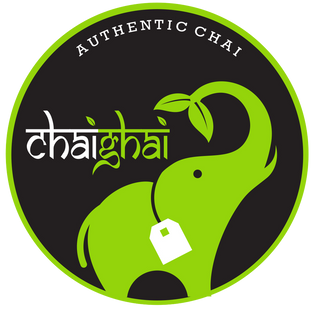“The soul becomes dyed with the colour of its thoughts”
-Marcus Aurelius

Our body is made up of a million frequencies which vibrate together to produce the colour of our aura. When we are tuning into energy, we may be able to see the many layers and complex colours of one’s aura. Colour and energy have a relationship that dates back centuries. We feel the energy of a painting from the carefully selected colours used to paint it on its canvas. Indian culture has long been considered colourful, with the bright clothing and spices that it is known for. On the spring equinox, India can be seen awash with all the colours of the rainbow, as people from every background join one another to revel in love and renewal while celebrating Holi, the festival of colours. Holi, an ancient celebration commemorating the rebirth of spring, takes place this year on March 18thand is truly an extravagant sight to see. In the Hindu calendar, Holi is celebrated on Purnima (full moon day) in the month of Phalguna, which typically falls near the end of February or into the middle of March. Holi celebrators bask in the eternal loving glow of Krishna and Radha, the holy personification of masculinity and femininity within Hinduism. They also celebrate Lord Vishnu’s victory of good over evil. Much like Diwali and Lohri, the Holi festival symbolizes a new beginning through its beautiful use of colours. Holi is a truly festive celebration where participants meet family and friends to venerate the spring harvest with new energy blossoming. They end the festival drenched in multicoloured powders and set aside any errors or misjudgments of the past, moving forward with the blessings and a renewed sense of love and freedom. The positive energy that exudes from the gatherings during Holi can be felt through the spectrum of colours painted across the crowd.
The True Meaning of Diwali – Chai Ghai
Everything You Need To Know About The Indian Festival Lohri – Chai Ghai

When Was the Holi Festival First Celebrated?
The joy and admiration present during the Holi festival has been celebrated by Hindu, Sikh, Jain and Newar Buddhist worshippers for centuries. One of its first written documentations is in the Puranas, composed as early as the 3rd century, and it is also made mention of in the Sanskrit play Ratnavali, from the 7th century. In some parts of Northern India, the festival events continue for as long as a week to celebrate a plentiful spring harvest. These festivities include the use of sticks and shields to further symbolize Krishna and Radha. Men hold the shields and women playfully hit them with sticks as Radha did to Krishna. This tradition is called Lathmar Holi, Lath meaning stick and Mar meaning beat in Hindi. It represents the mischievous relationship between Krishna and Radha. Krishna also bade Radha to colour his face any colour she desired, which is where the colourful nature of the Holi Festival comes from. During Holi, people embrace their inner child, and act in a very playful and mischievous way. This is seen in throwing coloured powder at one another as well as singing and dancing to commemorate the day and releasing their inhibitions. Holi offers an uplifting experience for those who participate in it. The fun and delight they will experience while celebrating, as well as the chance to reset their chakras and release endorphins will help to elevate and inspire them for the year to come. The positive vibrations felt through the colours that float across large gatherings are heartwarming and reaffirming that the ancient Indian culture is a colourful one.

How Did the Holi Festival Get Its Name?

The Holi festival, through its representation of colour, elucidates the triumph of the spirit of Prahlad and his divine belief in Lord Vishnu. Holi was given its name to memorialize Holika and the betrayal of her nephew Prahlad. The night before the Holi festival begins; a bonfire is lit that signifies Holika, the sister of the demon King Hiranyakashyapu. Together they planned to kill the king’s son Prahlad, who himself was a follower of Lord Vishnu. This angered King Hiranyakashyapu as he was incredibly influential and controlling, so much so that he thought himself a god and wished for all those in his kingdom to obey his rule. Holika, who herself was immune to fire, was asked by her brother to trick Prahlad and cast him into the fire for his unwavering belief in Lord Vishnu. She was able to persuade Prahlad to sit on her lap in the fire. To contest this act by his aunt, Prahlad chanted the name of Narayana, another form used to call Vishnu and was saved by Lord Vishnu, because of his devotion to him. Likewise, Holika was unaware that her powers of fire immunity were only available to her if she entered the fire alone. As such, Lord Vishnu burnt her for her deceit and touched by Prahlad’s allegiance to him spared his life. This is why during the Holi festival pieces of wood are used to ignite the bonfire symbolizing how Holika was consumed by the fire for this treachery. The colourful glow of the bonfire’s light further shows how steadfast dedication to an ideal will help one overcome any obstacle and enlighten their path as they go forward.
Science behind Holi, the festival of Colours (ncsm.gov.in)
What is the Message Behind the Story of the Holi Festival?

The divine nature of the story behind the Holi festival follows the triumph of light over dark, of Lord Vishnu saving Prahlad, because of his unwavering dharma from Holika’s betrayal. Brahma, the creator had given Holika the power to resist fire on the pretext that she never uses it to harm another. Since she broke this rule at the biding of her brother, she was punished by Lord Vishnu and suffered the same fate she had intended for Prahlad. The lighting of the fire during each Holi festival is called Holika dahan and occurs as dusk begins on the eve of Holi. The orange hue that glows from the fire is said to be lucky and sacred in Indian culture. Afterwards the ritual of Parikrama is performed in which a clockwise circle is formed around the pyre and followers pay homage to the gods by moving along its path. This is done, alongside religious contemplation and meditation to honour Prahlad’s devotion to Vishnu and the power that true faith has to triumph over temptation. In some North Indian states effigies of Holika are burnt, while party goers sing and dance around the fire. Then, as the Holi festival comes to a close followers take a small part of the fire from the bonfire and place it in their homes to help purify their families from disease. This message helps those who practice it remain pure of mind and body, letting every colour used during the Holi festival intermingle while painting the tapestry of their life.
Why Are Colours Significant During the Holi Festival?

Colour plays a large role in the everyday life of Indian society in everything from clothes to food to decorations. The Holi festival’s use of colour began because of this deep meaning, which can be found throughout Indian culture. Green symbolizes new beginnings in nature, red love, yellow knowledge and blue represents Krishna. In the past kumkum made from turmeric was used to make the colours, along with the flowers of dhak and neem. The colours all mix together which represents people of all castes and creeds jointly welcoming the new spring regardless of their social standing. These customs remain in common practice today, with water soluble pigments also gaining wider use. Water guns and balloons with coloured water have also become popular to use during the celebration as a way to create further delight. Dry powder of all colours is also smeared on and thrown at one another. People sing and dance and often play dholak (drums) to heighten the festivities. Attendees forget any of their grievances from the past and join together with a renewed spirit and a fresh outlook as the Hindu calendar comes to a close. Party goers are surrounded by colours, as they fly in all directs and spray every which way. Their faces are covered in colour that come alive with smiles and laughter, fully showing the joy that this spiritual experience brings to them.
Holi, India’s Most Colorful Festival—Get the Facts (nationalgeographic.com)

"Mere Colour can speak to the soul in a thousand different ways"
-Oscar Wilde

The colourful ancient Indian culture has remained intact today through continuing these ancient rituals, and keeping faith central to culture. The emotional release can be seen in the dancing and singing seen in many Indian festivals. Holi’s mischievous and fun qualities are personified in throwing coloured powder and water balloons at one another. Holi works to preserve one’s faith by reengaging one with their inner child. The Holi festival with its colour and reverie is one of the most exuberant and gratifying celebrations of all the festivals in Indian culture. The success of Prahlad through the intervention of Lord Vishnu made their conquest over Holika the central action upon which Holi bases it celebration. The colours that saturate Holi’s festivities help to contrast the stark white of winter. During Holi people use love, colour and renewal to unite together within their community around a huge bonfire in the hopes of ushering in a prosperous year to come. We wish all those who celebrate Holi a joyful and colourful festival. To commemorate this enjoyable and entertaining festival, Chai Ghai has a 30% OFF store wide Holi sale. We are also doing a Holi pop up store, on March 18th from 1pm to 5pm at Saje Welness at Tsawwassen Mills. Join us for complimentary hot chai, and all our different types of chai will be available for purchase. Add some colour to your life with our authentic Indian chais and feel the positive vibrations that Indian culture is renown for.




